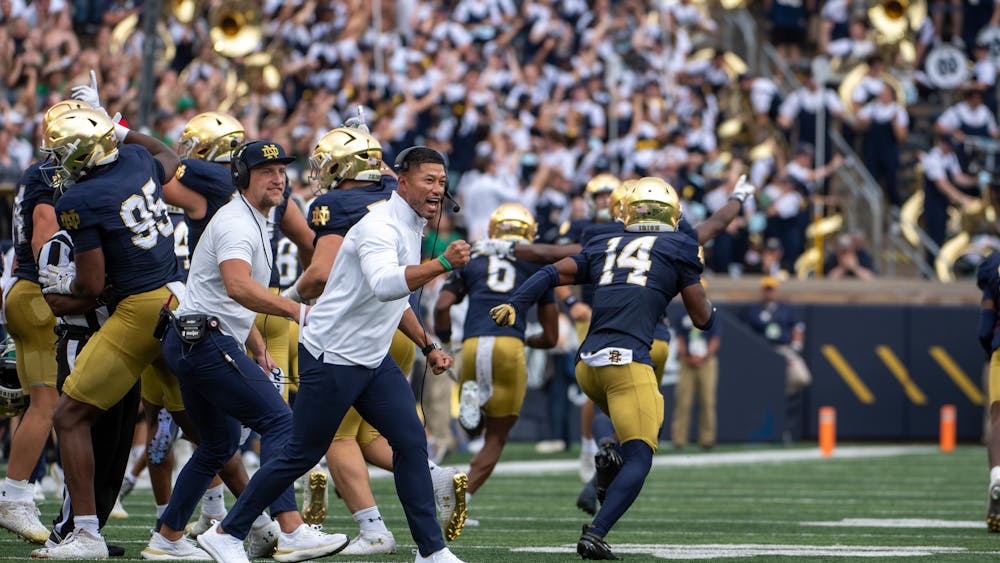Saint Mary’s Assistant professor in mathematics and computer science Ranjan Rohatgi was selected to serve on the Indiana Redistricting Commission.
The commission has held 10 public virtual hearings for districts in Indiana where more than 700 people have voiced their thoughts about districting and gerrymandering. The commission is gathering information to create a report advising the legislature to redraw the state legislature district maps in a fair and just way.
Rohatgi said the Commission seeks to help the legislature to build lines that most effectively connect the public with their representatives.
“We are not viewing ourselves as the legislature does this horribly, and we could do so much better. We are viewing this as we are getting all this information. Let us help the legislature,” he said.
The commission consists of three democrats, three republicans and three independents coming from a variety of backgrounds, including professors, full-time activists and a retired mayor. The commission is not unique. According to the National Committee of State legislatures (NCSL), five other states have advisory committees, and 14 states have committees who draw redistricting lines.
“The Commission was formed to show the public how a more transparent and public-focused process could work,” Rohatgi said. “There are several states that have commissions where the legislature is not responsible for drawing their own lines.”
The state legislature is responsible for drawing the lines for their own elections. Often representatives “pack,“ concentrate the opposing side’s power to a single district, or “crack,“ dilute an opposing side’s supporters across multiple districts, their opponents’ support to make it easier for them to win. This is an issue for both parties and can lead to feelings of disenfranchisement amongst the public.
“Fixing gerrymandering does not need to be a partisans issue,” Rohatgi said. “Both parties have engaged in it for over 200 years ... voters of all stripes can be a part of fixing gerrymandering.”
Districts and district maps often grow to resemble jagged snakes or dragons as a result of these processes, which are legal. Rohatgi said that convoluted districts are a problem across the country, but there are other ways to undercut the opposite party’s support.
“We should not just focus on shapes,” Rohatgi said. Indiana has very nice shapes, but in my opinion does not have very good representation.”
District lines also often split up communities, including school districts and cities, lessening the effectiveness of their organizational power.
“We want communities of interest to feel like they are being represented,” Rohatgi said. “All else equal, we should not split up a school district, or a town or a county.”
These communities are not just geographical but also social and political.
“Where are the people who regularly use public transportation?” he asked. “Those people should have a voice, so we shouldn’t split them up into four districts throughout the city.”
To Rohatagi, ensuring that these groups have a voice is just as important if not more important as making sure that districts have proportional populations.
“It is possible that our districts won’t always look pretty,” he said. “It is possible that our districts won’t always have the same population. In theory, they should, but there are tolerances. In my opinion, if there is a community of interest that should be together, if that means that there is one district that will have slightly more people than another, I think that okay.”
Creating better state district lines means not only ensuring that votes carry the same weight, but also that representatives are not too comfortable during elections, Rohatgi said.
“More than wanting compact districts, we have heard that our fellow Hoosiers want districts that foster competition,” he said.
Rohatgi further explained that the commissioners’ meetings involving South Bend citizens revealed that constituents were upset at the lack of engagement from their representatives following the 2015 redistricting due to the district no longer being competitive.
The commission wants to help and make sure that constitutes feel as if their vote is valuable while also giving them an active voice in the creation of the maps, Rohatgi said.
The commission is hosting map drawing competitions for Indiana’s nine congressional districts, 50 seat senate districts and 100 house districts with cash prizes. Following training sessions with Districter software, the commission will present selections from the contest to the legislature.
Rohatgi invites students who are not Indiana natives to get involved by researching their state’s process and contacting politicians on all levels of government.
“Call your state senators. Call your state representatives,” he said. “It might feel like hitting our heads against a brick wall when we call and send emails to our state representatives, and to some degree, that is probably true, but on the other hand, if you are talking about state level legislatures, it matters how many people they hear from on a given issue. It absolutely matters. It is vital to contact your state representatives and tell them you care about this issue.”
He urges students to get involved in any way possible.
“The young people in the next 10 years will be the people making up the workforce and making the decisions down the lines so they should be involved in creating the lines.”
Read More
Trending









